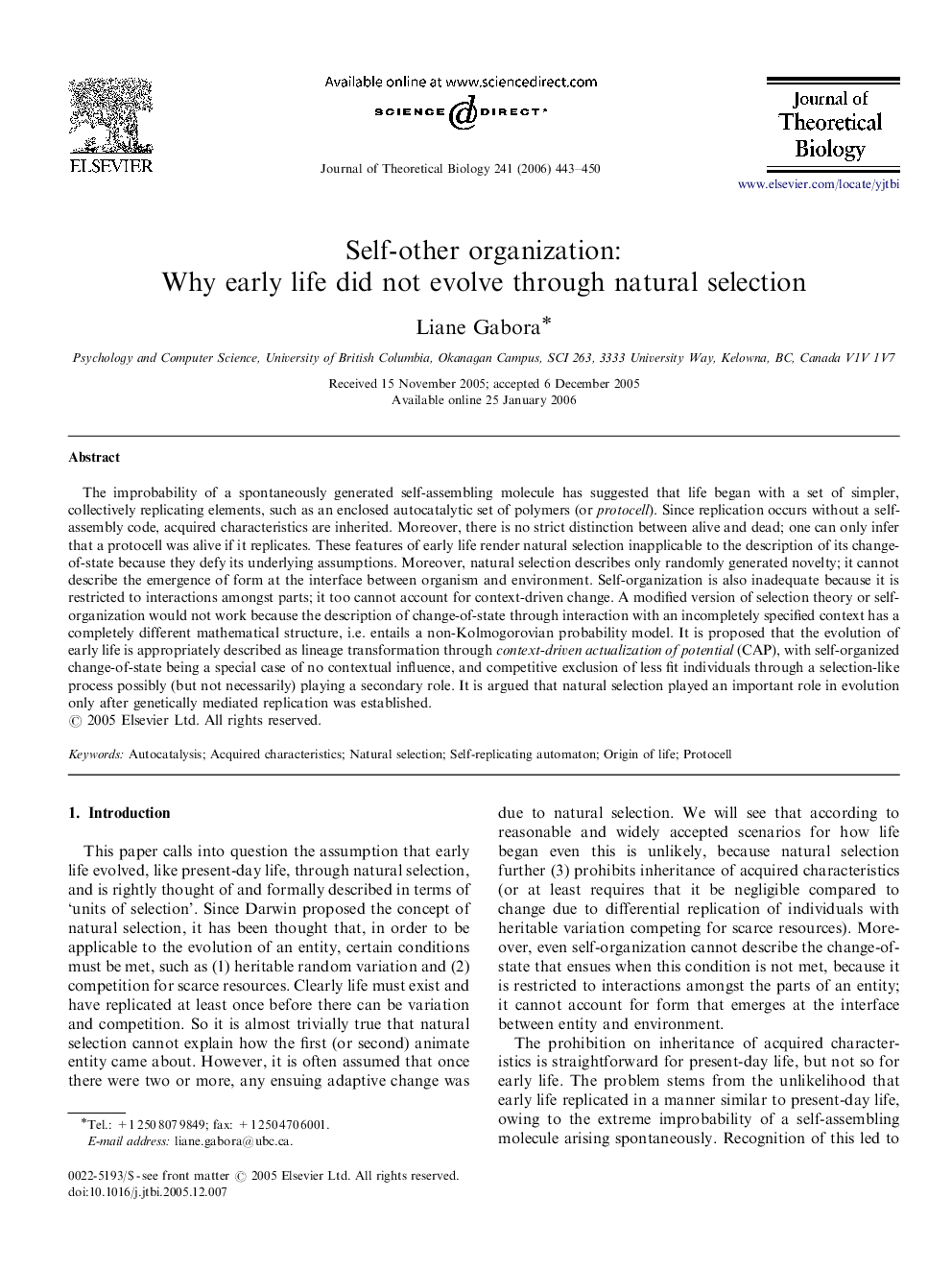| Article ID | Journal | Published Year | Pages | File Type |
|---|---|---|---|---|
| 4499398 | Journal of Theoretical Biology | 2006 | 8 Pages |
The improbability of a spontaneously generated self-assembling molecule has suggested that life began with a set of simpler, collectively replicating elements, such as an enclosed autocatalytic set of polymers (or protocell). Since replication occurs without a self-assembly code, acquired characteristics are inherited. Moreover, there is no strict distinction between alive and dead; one can only infer that a protocell was alive if it replicates. These features of early life render natural selection inapplicable to the description of its change-of-state because they defy its underlying assumptions. Moreover, natural selection describes only randomly generated novelty; it cannot describe the emergence of form at the interface between organism and environment. Self-organization is also inadequate because it is restricted to interactions amongst parts; it too cannot account for context-driven change. A modified version of selection theory or self-organization would not work because the description of change-of-state through interaction with an incompletely specified context has a completely different mathematical structure, i.e. entails a non-Kolmogorovian probability model. It is proposed that the evolution of early life is appropriately described as lineage transformation through context-driven actualization of potential (CAP), with self-organized change-of-state being a special case of no contextual influence, and competitive exclusion of less fit individuals through a selection-like process possibly (but not necessarily) playing a secondary role. It is argued that natural selection played an important role in evolution only after genetically mediated replication was established.
